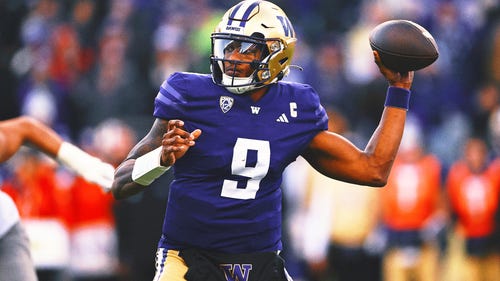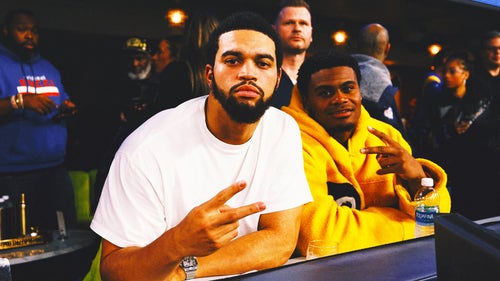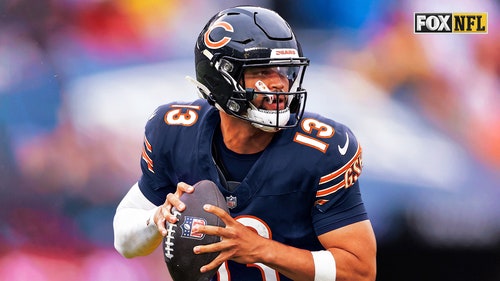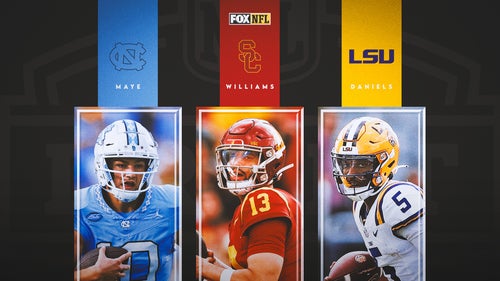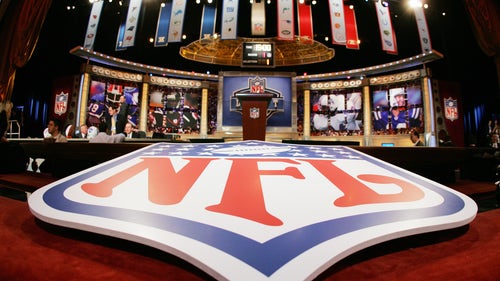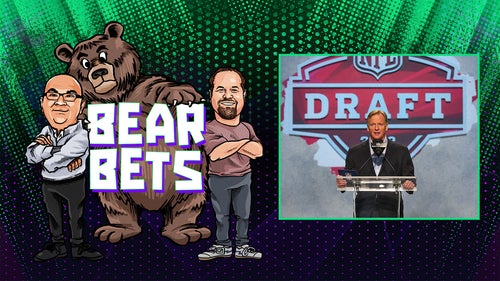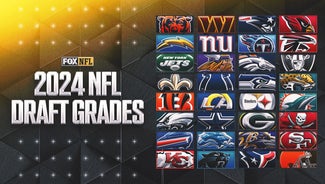
Path to draft is intensive, expensive
The NFL Draft is an almost never-ending process.
NFL teams turn their preparation into overdrive once their season is over.
But preparation for the draft isn't limited to just the 32 teams; NFL player agents also are “grinding away” on player recruitment and player training.
Combine training
Once a player's eligibility is up, or he decides to declare for the draft as an underclassman and has played his last game, he can sign with an agent.
Once the player has signed with an agent, the process of draft preparation begins in earnest.
Many of the players projected to go in the higher rounds, but not all, will go through NFL Scouting Combine preparation at a training center or development camp around the country.
At these venues — and there are a bunch of them anywhere from California to New Jersey — players go through weight training, speed training, strength training and any exercise that will help the player improve in any area that will be highlighted during the Combine.
Some training facilities even offer combine interview training in order to get the player well prepared for the kind of questions they'll get from prospective teams. If the player doesn't get this type of training at the facility, some agents will consider hiring a Combine preparation coach who specifically trains the player on how to answer questions from teams and the media.
Teams have complained for years about this, but the agent has to do everything he can to make sure the player acts in a professional environment and is ready for any question. One wrong word or action can actually cause a team to take the player off their draft board or move him down a spot or two.
Expenses
The cost to train players, according to various agent sources, can run from $5,000 to $15,000 at the training centers for anywhere from four to eight weeks.
Add transportation, meals and lodging for that time span, and an agent could spend easily more than $20,000 just on training alone.
And the cost of player recruitment leading up to signing for the agent on airfare, hotels, phone calls and other miscellaneous expenses can reach anywhere from $10,000 to $20,000 depending on the player.
It's an expensive process.
If the agent misses on a player, meaning the player goes off the board much lower than expected or doesn't get a second contract, the mistake can be costly.
Just one bad mistake can knock the lesser agent right out of the business.
Senior Bowl and other All-Star Games
About four weeks before the NFL Combine, the top senior players (non-underclassmen) participate in Senior Bowl week in late January.
Most teams are represented during the week's practices by coaches, scouts or high-end personnel executives in order to get an idea how the top seniors match up against one another. Practices tapes are made available to all 32 NFL teams.
Players often can raise their draft stock with a good showing during the practices. NFL personnel sources say the practices are more important than the game itself because you can get a better idea of player attributes in the controlled setting by the NFL coaches who run them.
The lesser known seniors or players who are not projected to go as high will participate in the East-West Shrine game or one of the other college all-star games.
And after those games are played, it's back to Combine preparation.
Combine
The NFL Combine is where almost everyone who works in player personnel on the pro or college side will be settling in for at least six straight days (Thursday through Tuesday) during the latter part of February each year. Even some team owners will make the trip.
Not only will every coach who represents offense and defense be there, but teams will bring along their medical and training staffs.
Several hundred players get invited to work out in Indianapolis during the event.
Many years back, the Combine only was held in order to get a good medical evaluation on a player. These days, it's much more than that.
While the workouts are very important in order to measure speed, strength (with the bench press) and athletic ability as it applies to an individual position, getting the correct height and weight is also extremely important.
Schools tend to list players taller than they usually are. That becomes a big problem for quarterbacks, offensive and defensive linemen, tight ends, wide receivers or even defensive backs.
If a quarterback winds up being a few inches shorter than expected, it could knock the player down a spot or two on a team's draft board.
Teams will pay particular attention to arm length with offensive and defensive linemen. If a lineman has arms that are much shorter than expected, that could cause a team to move a player down their draft board a little bit. A lineman's (offensive or defensive) reach based on arm length is a big factor in grading the position. If an offensive lineman can't get his hands on a defensive lineman because his arms are too short, that's a big problem.
Because some players already have their draft spot solidified, meaning they are expected to go very high in the draft, they'll choose not to work out. This tends to happen with quarterbacks projected to go within the top-10 selections. While teams expect players to work out, it's up to the individual player to do so. Players can still work out privately for the teams after the Combine during their pro day or near campus.
Of course, the speed of a player at several positions on both sides of the ball is very important. Players who participate in the workouts are expected to go through the 40-yard dash, which is also broken down into 10 and 20-yard measurements. Players will also go through short shuttle runs to measure short area quickness. The timed speed for defensive linemen in these drills is especially important.
Leaping ability is also taken by the broad and vertical jump. Teams will look to measure a player's explosion off the ball by those jumps.
But while the workouts are very important in order to see whether what teams view on game tape measures up to what happens in shorts and T-shirts inside Lucas Oil Stadium for six days, the individual player interviews might be just as important.
Each NFL team gets to interview up to 60 players privately for 15 minutes.
During these interviews, players meet with the teams alone, meaning their agents are not allowed in the room. Teams will ask players about their past, and because of the problems of some of the bigger draft busts like Ryan Leaf and, most recently, JaMarcus Russell, teams will deep into a player's past and ask him questions going as far back as junior high or even earlier. They are trying to find out as much as they can about the character of each player and see how important football is to them.
All players will go through drug and medical testing. The players who have an injury history will go through even more testing if required. It's in these tests where red flags could arise that could drop a player down a team's draft board.
And finally, all players will take a Wonderlic test, which measures cognitive intelligence.
Teams want to know if players can understand concepts and whether they can learn in a different environment.
However, the true worth or importance of the 12-minute, 50-question exam has been debated for many years because the player's athletic ability and game tape have been the biggest determinants on draft boards.
And with Combine training, agents will get players trained for the Wonderlic. It’s all part of the process of draft preparation.
About half of the players who attend the Combine will go through media interviews in which they will be asked about their careers and, in some cases, any off-the-field issues.
A few weeks after the Combine, players will have their pro day workouts.
Pro day
Pro day workouts almost always take place on the campus where the player went to school.
These workouts are especially important for players who did not work out at the Combine or who were nursing injuries.
One of the key reasons players work out during pro days and not during the Combine is because they feel more comfortable in their own environment on campus.
These workouts are usually run by a positional coach or area scout.
Some players who worked out at the Combine will rest on their performance, if solid, and will choose not to work out at their pro day.
Pro day workouts are similar to NFL Combine workouts.
Speed, strength and other athletic tests are performed for different players at specific positions. Quarterbacks who didn't throw during the Combine will usually throw in this environment.
The final piece of the NFL Draft process takes place with private visits and workouts.
Private visits/workouts
Teams can have up to 30 players in for private visits to the team facility. While teams are prohibited from working out players during private visits, they can still give them physicals. This becomes especially important for players who have low medical grades. A pro personnel source said it's not totally uncommon for something to come up during a team physical that was not discovered during the Combine or post-Combine medical re-check.
During the private visits, highly thought-of players usually meet with the head coach, general manager, position coaches and scouting director. The projected lower-round players might meet with position coaches — it just depends on the individual team's philosophy.
Because this is their last opportunity to meet with the player in person, the team will usually bring the player up to the chalkboard to see what he knows about his particular position and different schemes depending on which side of the ball he plays.
Teams can also conduct private workouts with individual players before or after their pro day workout either on campus or work the players out near their hometown.
Teams have until the Friday before the draft (seven days previous) to bring players in for visits.
Teams will call agents leading up to the draft for last-minute information such as cell numbers, where the players will be on draft weekend and anything that might have changed with their situation since they last spoke.







































































































































